Silvia Pettem
Full Article
Silvia Pettem is a longtime Boulder County resident who has been poking around historic sites for at least forty years. Her research and writing has evolved into two niches –– Boulder County history and missing persons/unidentified remains –– and she has authored more than a dozen books including Separate Lives: The Story of Mary Rippon and Boulder: Evolution of a City. Silvia also writes a monthly history column for the Boulder Daily Camera.
Selected Columns
Editor’s note: These newspaper columns have been republished in their original form. The opinions expressed in them are those of the authors and do not necessarily reflect the views of Colorado Encyclopedia.
Mary Rippon
"Mary Rippon Received Posthumous Honorary Degree"
Boulder Daily Camera, March 26, 2006
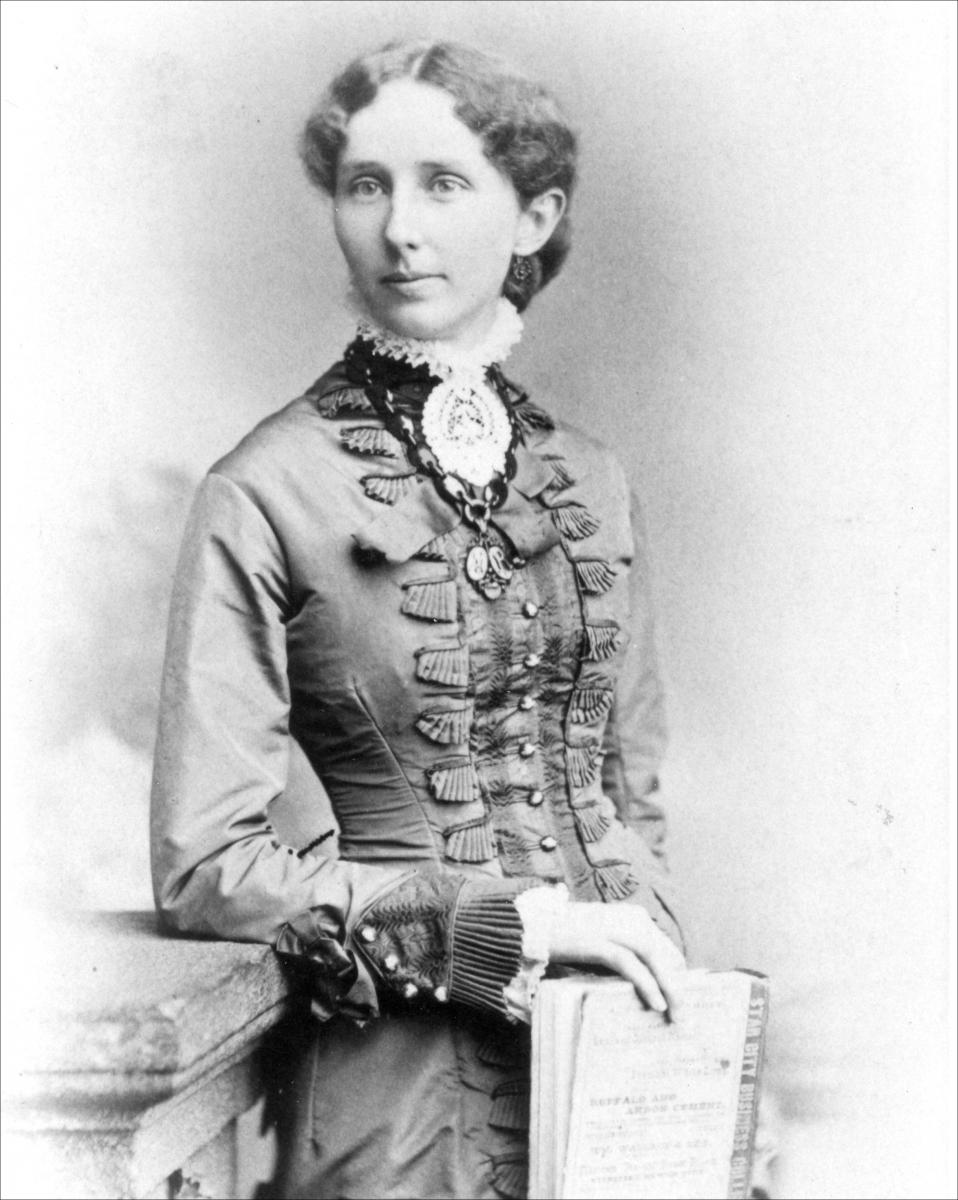 Mary Rippon was the first woman professor at the University of Colorado where she taught for thirty-one years. Many of her students went on to earn advanced degrees, but “Miss Rippon” (as she always was called) never had a degree of her own, not even a bachelor’s. That would change. At the University of Colorado’s Commencement in Boulder, in May 2006, the Regents awarded a posthumous honorary doctorate to their legendary pioneer educator.
Mary Rippon was the first woman professor at the University of Colorado where she taught for thirty-one years. Many of her students went on to earn advanced degrees, but “Miss Rippon” (as she always was called) never had a degree of her own, not even a bachelor’s. That would change. At the University of Colorado’s Commencement in Boulder, in May 2006, the Regents awarded a posthumous honorary doctorate to their legendary pioneer educator.
Said Regent Cindy Carlisle, “This award is long overdue.”
Rippon was born in Illinois in 1850. Her father died when she was a baby, her mother abandoned her, and she was passed around an extended family. When the young woman graduated from high school in 1868, she inherited money from the sale of her late father’s farm. She planned to go to the University of Illinois, but it didn’t admit women.
Instead, Rippon traveled to Europe where she ended up staying for five years. While there, she attended university classes in Germany, France, and Switzerland. She also kept in contact with her former high school chemistry teacher, Joseph Sewall.
When the University of Colorado (CU) first opened in September 1877, Sewall was its first president, and he invited Rippon to join the faculty. At the time, there was only one other professor, and the entire University was housed in one building, now called Old Main.
Rippon, then twenty-eight years old, arrived on the train in January 1878 and lived in Boulder for the rest of her life. CU has always admitted women. The new professor was well-liked and quickly became a role model to female students. Beginning in 1891, she chaired the Department of Modern Languages (later the Department of German Language and Literature).
Before long, Rippon was known as an exceptional professor who was highly revered by both students and colleagues. And she kept a low profile––for good reason.
When Rippon was thirty-seven years old, she had a romantic relationship with a twenty-five-year-old student. She and the student, Will Housel, secretly married. Their daughter, Miriam Housel, conveniently was born in Germany while Rippon took a year’s sabbatical. The couple (who never lived together as man and wife) left the baby in a European orphanage. Determined to keep her job, Rippon resumed teaching at CU as if nothing in her life had changed.
From then on, Rippon led two separate lives. In the Victorian era, married women didn’t work, as society deemed it as taking a job away from a man with a family to support. Ironically, Rippon financially supported her daughter, even after Housel remarried and was able to give their daughter a home.
Rippon retired from CU in 1909, but she remained in Boulder until her death in 1935. Her private life was known only to two close friends, even during the years that her daughter (now deceased) also taught at CU. Miriam’s son, Wilfred Rieder, announced his relationship to the university community in the 1980s. And his son, Eric Rieder, came to Boulder to accept the long-sought degree for his great-grandmother.
“Rippon shattered the glass ceilings of the day,” said Carlisle. “Not only was she a scholar and a teacher, she was a revolutionary. She was a magnet for students who were ready to break the mold.”
Ruth Cave Flowers
"Ruth Cave Flowers Was an Advocate for Human Rights"
Boulder Daily Camera, March 8, 2001
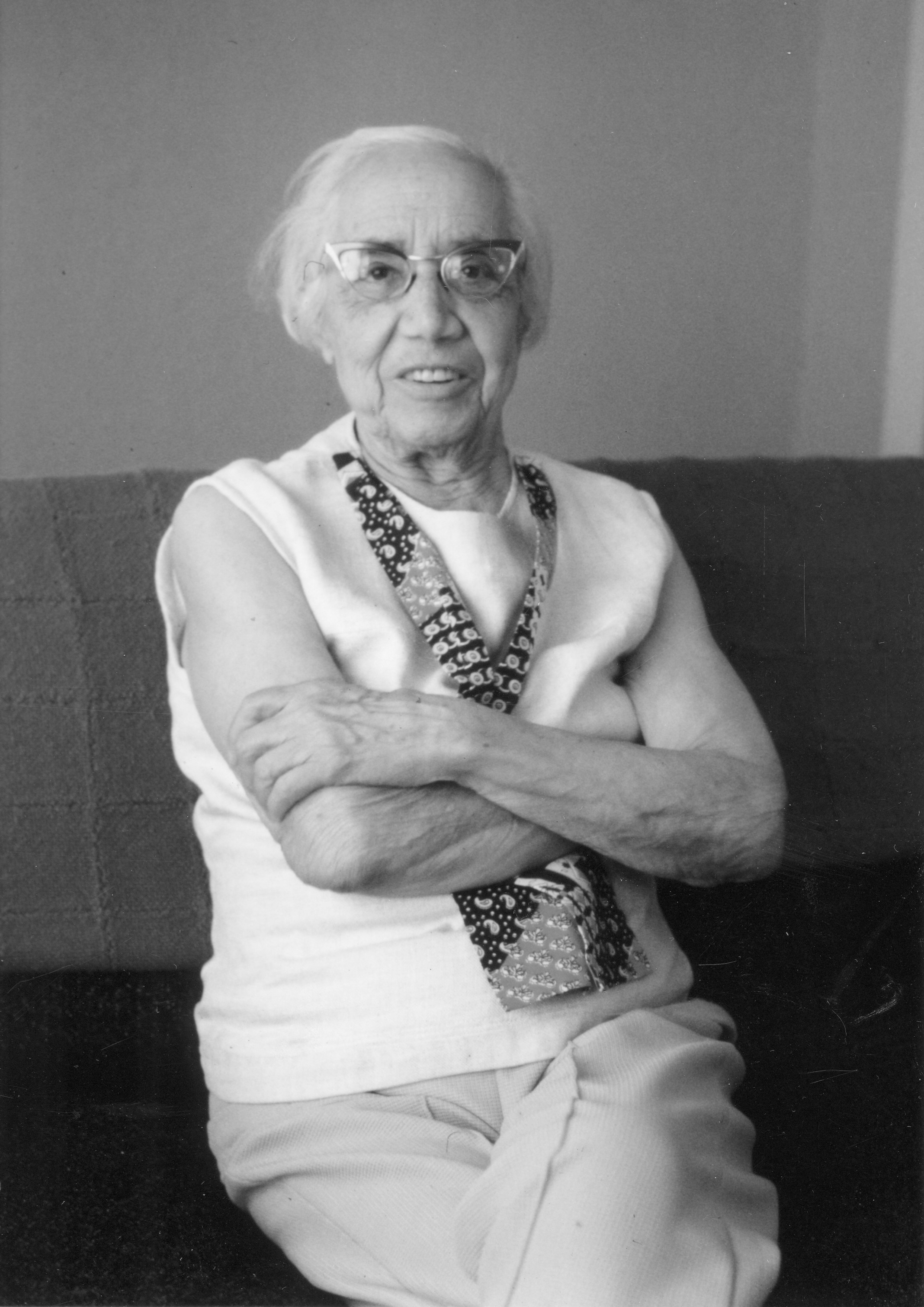 When the late Ruth Cave Flowers completed high school in Boulder, in 1920, her high school principal refused to give her a diploma because of her race. Even so, she was admitted to the University of Colorado, from which she graduated in 1924. Many years later, in 1977, Flowers gave the commencement address at Boulder High School and was surprised with a diploma in her name––more than a half-century overdue.
When the late Ruth Cave Flowers completed high school in Boulder, in 1920, her high school principal refused to give her a diploma because of her race. Even so, she was admitted to the University of Colorado, from which she graduated in 1924. Many years later, in 1977, Flowers gave the commencement address at Boulder High School and was surprised with a diploma in her name––more than a half-century overdue.
Flowers once told an interviewer that all she asked was just to be considered another human being. Growing up in Boulder wasn’t easy for an Black woman, but she persevered and was showered with accolades in her eventual teaching career.
Born in Colorado Springs, the young girl was abandoned by her father and orphaned, at age eleven, by her mother. Flowers and her sister then moved to Cripple Creek to live with their grandmother. A few years later, in 1917, they all moved to Boulder, hoping for better educational opportunities.
At the time, most members of Boulder’s Black community lived in the flood-prone area of town known as the “little rectangle,” an area bounded by Canyon Boulevard and Goss, Nineteenth, and Twenty-third streets. There, at 2019 Goss Street, the family built their home, now a Boulder city landmark.
Flowers enrolled in the State Preparatory School (forerunner of Boulder High School) while she worked in a laundry and washed dishes in a restaurant in order to support herself, her sister, and their grandmother. Even without the diploma, she had completed the required high school credits and was admitted to CU, where she became a foreign language major.
At the university, she was allowed access to her classes but was denied food service on campus. President George Norlin (who defied the Ku Klux Klan) heard of her determination to stay in school, and provided her with a job. He also taught Greek and may have inspired her love for the classics that she retained throughout her career.
After graduation, and fired with ambition to become an educator, Flowers moved to Washington, D.C. where she earned a doctoral degree in Romance languages. She also earned a law degree, married a lawyer, and, for a time, practiced law––but she preferred teaching. She became a language professor in colleges in both North and South Carolina.
In 1959, Flowers returned to Boulder and taught Spanish and Latin at Fairview High School. She was the first Black teacher in the Boulder Valley School District. Ten years later, Harvard University selected her as one of four outstanding teachers in America.
Former colleague and past state legislator Dorothy Rupert spoke of Flower’s “infectious love of learning” and her “strength, gentleness, and clear intellect .”
When Flowers died in 1980, she had seen a lot of changes during her lifetime. But, they weren't enough. She once stated, "I really want to see a time when we won't have to be concerned with black awareness, brown awareness, women's rights, or whatever, but simply human rights and human awareness."
Muriel Sibel Wolle
"Muriel Sibel Wolle Remembered as Her Namesake Is Demolished"
Boulder Daily Camera, November 11, 2007
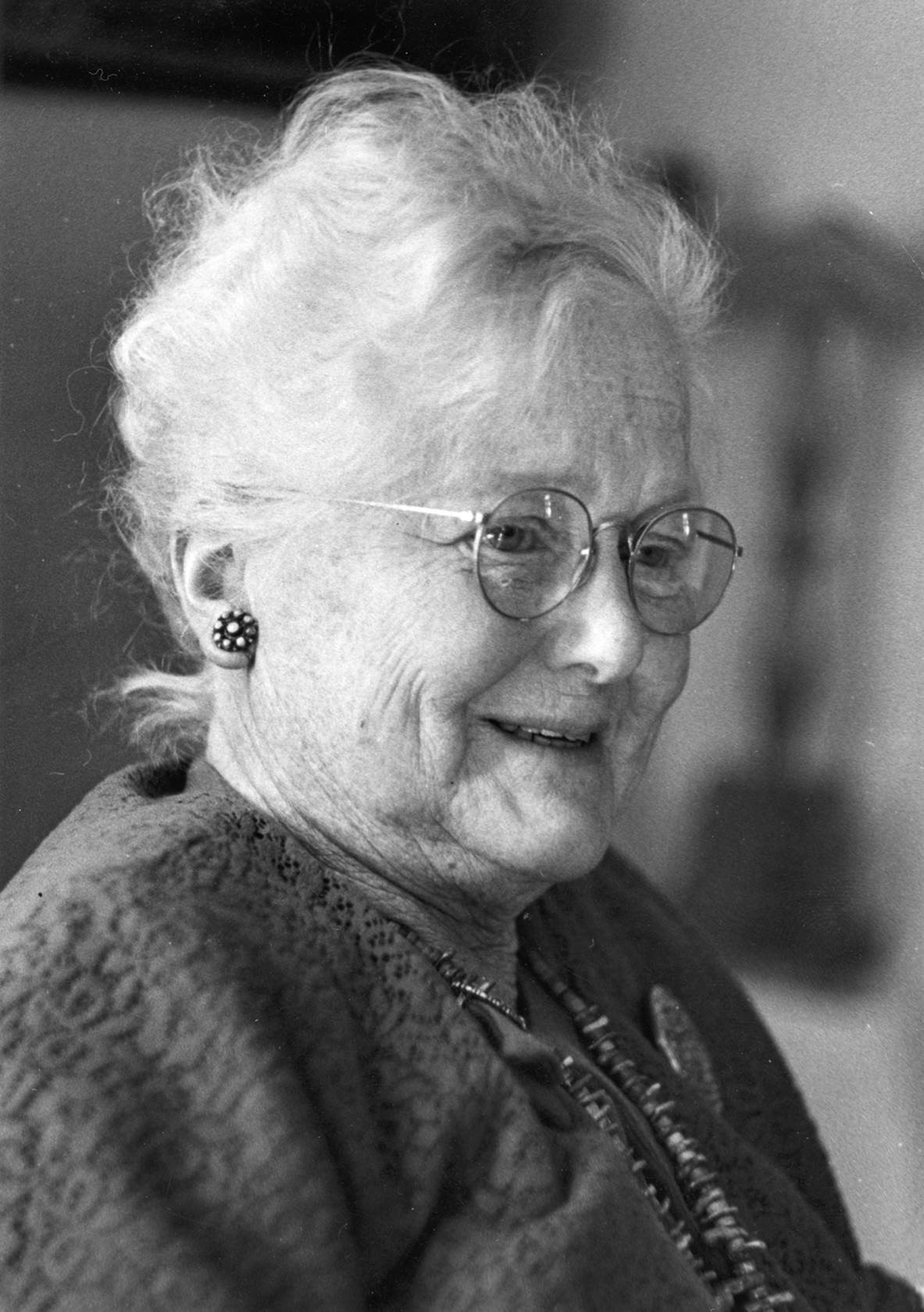 Muriel Sibell Wolle once stated that she was “not a historian nor a writer, but an artist gone slightly berserk.” Long before most people thought about historic preservation, she sketched Colorado mining towns to create a pictorial record of their often-decaying buildings before many of them disappeared.
Muriel Sibell Wolle once stated that she was “not a historian nor a writer, but an artist gone slightly berserk.” Long before most people thought about historic preservation, she sketched Colorado mining towns to create a pictorial record of their often-decaying buildings before many of them disappeared.
If the former artist and University of Colorado fine arts professor were alive today, she probably would be sketching her namesake: the Sibell Wolle Building, until recently a part of the CU campus. The aging structure was most recently used for many years by the fine arts department until its demolition, in 2008, to make way for the new Visual Arts Complex.
The red brick building originally comprised the “shops” for engineering students, who contributed to its design. Light filtered through a modified saw-tooth roof considered state-of-the-art at the time.
Muriel arrived in Boulder by train, in 1926, when the building was only eight years old. The West was new to the petite and energetic New York native. Single and 28 years old, she had studied advertising and costume design and then came to Boulder to teach art at CU.
After a visit to Central City, she stated that she felt challenged and stirred by the echoes, memories, and history of the nearly deserted gold mining town.
During the school year, Muriel taught in the classroom. She never learned to drive, but every summer eager students chauffeured her around in the mountains where she made rough pencil sketches. She drew quickly, on the scene, then took her sketches home where she completed them with black crayon and occasionally water colors.
Her finished drawings were representative rather than detailed. Her intent, she wrote, was to “catch the mood and quality of the town... with a sympathetic and dramatic interpretation.”
Although Muriel’s first objective was to get the deteriorating buildings down on paper, she realized that she needed to record the towns’ histories, as well. Her first book, titled Ghost Cities of Colorado, depicted the towns of Central City, Black Hawk, and Nevadaville. The next year she published Cloud Cities of Colorado, primarily on Leadville.
Muriel married Francis Wolle (a CU English professor), then wrote, under the name of Wolle, her most popular book, Stampede to Timberline. It was first published in 1949 and has become the “Bible” of Colorado ghost town books. It’s still in print today and covers much on Boulder County.
By the time of the book’s release, Muriel was the head of the fine arts department, a position she held until her retirement in 1966. Within a year of her death in 1977, she was honored by the university as one of three “alumni of the century .”
Muriel Sibell Wolle is not likely to be forgotten. The bulk of her collection of drawings is located in the Denver Public Library. Also, some of the materials in the Sibell Wolle Fine Arts Building will be recycled in the building that replaced it. But those who want to remember the building as it was –– if they didn’t sketch it themselves –– will have to settle for old photographs.
George Morrison
"Jazz Musician Morrison Got His Start in Boulder County"
Boulder Daily Camera, December 12, 2002
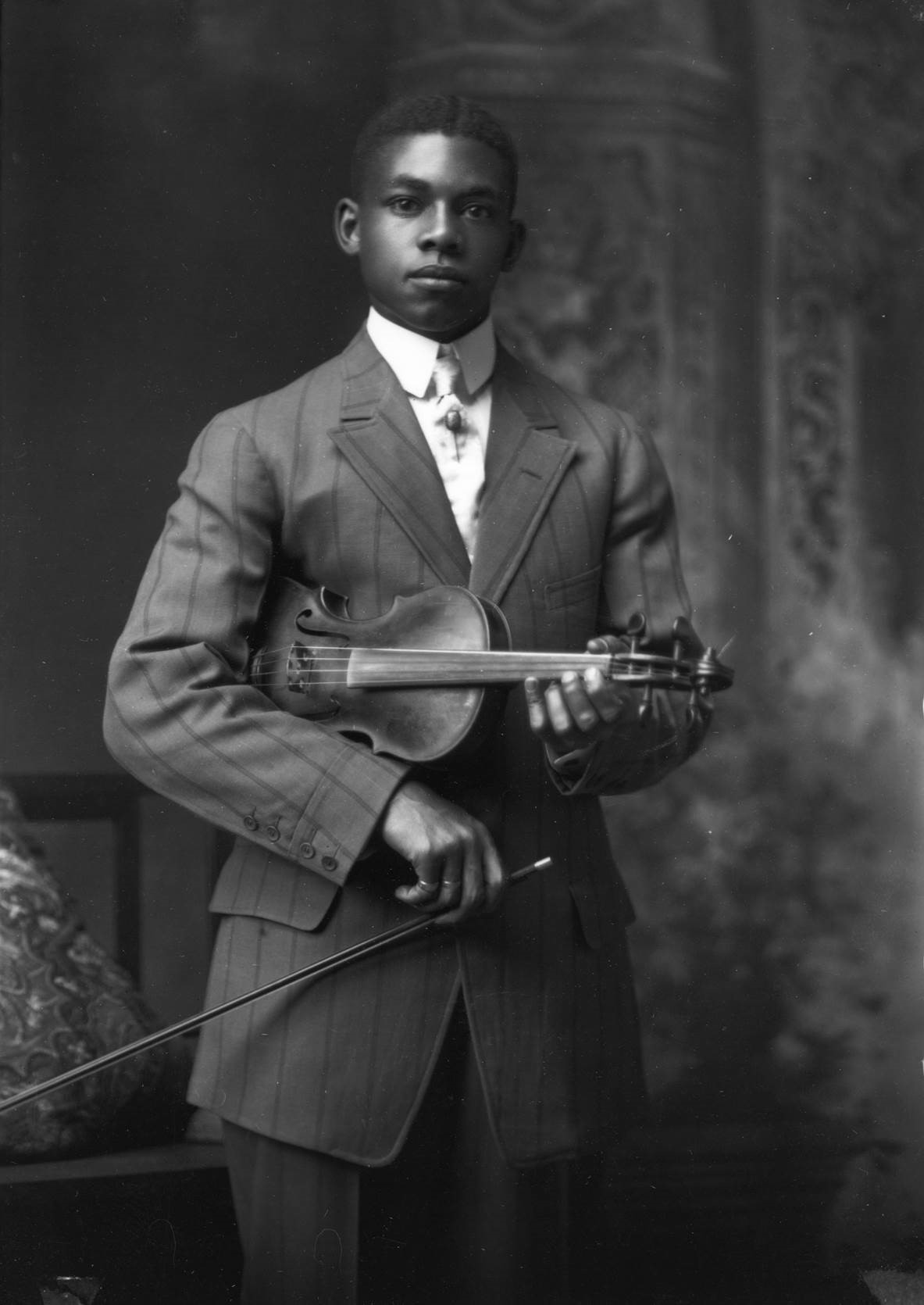 George Morrison was only 9 years old in 1900 when he moved to Boulder with his mother, brothers, and sisters. Talent had come naturally to the youngest of 14 in a Missouri-born musical family. Before long, George and his brothers formed the Morrison Brothers String Band. It got its start in the mining camps west of Boulder
George Morrison was only 9 years old in 1900 when he moved to Boulder with his mother, brothers, and sisters. Talent had come naturally to the youngest of 14 in a Missouri-born musical family. Before long, George and his brothers formed the Morrison Brothers String Band. It got its start in the mining camps west of Boulder
To earn money for guitar and violin lessons, Morrison worked in the kitchen of the Boulder’s Delta Tau Delta fraternity house and also took a job as a shoeshine boy in a Pearl Street barber shop. He later outshined his brothers and became a renowned jazz musician.
According to a newspaper interview from years ago, the naive, but eager, country boys slid up and down the dangerous canyon roads in a horse and buggy, playing in any kind of building they could find. By 1914, the band was renamed the Morrison Orchestra and had a local manager named Lester Rinehart. Notices in the Boulder Daily Camera often announced, “Music by the Morrison Brothers of Boulder” or advertised “dances by Rinehart and his colored company.”
On many occasions, these dances were held in the schoolhouses of Salina, Sunset, Gold Hill, and Sugar Loaf. Popular tunes at the time were “Silver Threads Among the Gold” and “After the Ball.” When the Morrison Brothers didn’t have a formal engagement, they played for donations on Pearl Street, just as street musicians do today.
Morrison eventually played in jazz bands all over the country and in Europe, but he fiddled away the better part of his career in Denver. For several years, he directed an orchestra at Denver’s Albany Hotel. In 1919, he and his band went to New York and made a series of recordings for Columbia Records.
In his later life, Morrison taught, composed, and arranged music, and he especially enjoyed arranging popular tunes for a full orchestra. He was said to have played late into the night, and then he would get up early on Sunday mornings to sing in his church choir.
In 1970, the late George Morrison told a Daily Camera reporter that he had always wanted to be a concert violinist, but he was barred from a career in a symphony orchestra because he was an African American. One of the conductors of the Denver Symphony even told him, “I’d have you as my concert master if you were a white man.”
One of Morrison’s protégés was Paul Whiteman, a white musician who was dubbed the “King of Jazz.” Ironically, Morrison later was called “the black Paul Whiteman.” Morrison, who died of cancer in 1974 at the age of eighty-three, included Jelly Roll Morton, Scott Joplin, and Duke Ellington among his friends.
If you would like to see one of the venues where George Morrison and his brothers got their start, take Boulder Canyon to Four Mile Canyon and turn right on Gold Run Road until you reach the Salina Schoolhouse. The restored building dates from 1885 and looks the same as when the Morrison Brothers played there many years ago.
Andrew J. Macky
"Andrew J. Macky Was a Self-made Man"
Boulder Daily Camera, July 1, 2007
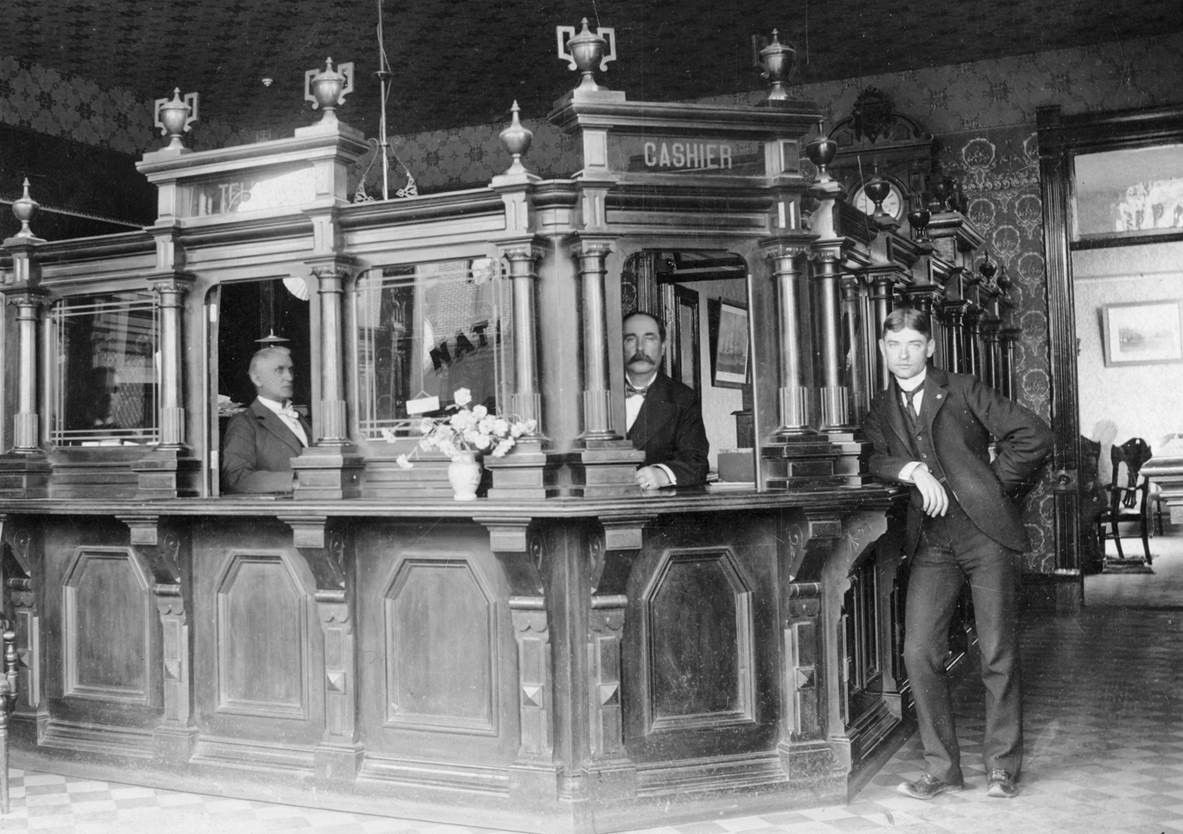 Members of the University of Colorado Board of Regents recently resurrected a resolution passed nearly a century ago to place a wreath every year on the grave of Andrew J. Macky in Columbia Cemetery. Before the Boulder benefactor died in June 1907 he had willed his considerable estate to CU for the construction of Macky Auditorium.
Members of the University of Colorado Board of Regents recently resurrected a resolution passed nearly a century ago to place a wreath every year on the grave of Andrew J. Macky in Columbia Cemetery. Before the Boulder benefactor died in June 1907 he had willed his considerable estate to CU for the construction of Macky Auditorium.
According to the 1908 regents’ minutes, the wreath was meant as a gesture of appreciation for Macky’s generosity. But the Boulder pioneer left more to Boulder than his money and his name. He was a self-made man who worked hard to achieve the wealth that he ultimately gave away.
Macky had arrived in Colorado Territory in 1859 as one of a Wisconsin party of young men, all eager to strike it rich in Colorado’s gold rush. They searched for gold but got discouraged and decided to find other ways to make their livings.
Some of the men, including Macky, ended up in Boulder. When Macky arrived, the town was merely a cluster of log cabins. As a skilled carpenter, he built and lived in Boulder’s first frame house, then on the northeast corner of Pearl and 14th streets.
At the time, Macky’s house was the largest and nicest building in Boulder, so he made it available for court sessions, public meetings, and dances. For eight years, he ran the post office out of his home and served as postmaster. In 1866, he built Boulder’s first commercial brick building. Neither of these buildings are still standing today.
Before long, Macky emerged as a community leader and served on the school board. He also became town clerk and treasurer, justice of the peace, and clerk of the district court. He found time to marry and adopt a daughter, and he became active in several fraternal organizations, as well as the Boulder County Pioneers and the Association of Colorado Pioneers.
By the 1870s, Boulder County’s gold and silver discoveries began to pour money into the local economy. Macky helped to organize the First National Bank of Boulder in 1877. Eight years later, he became its president.
Macky also, on his own, provided investors with high-interest short-term loans. He was part owner of the Boulder Milling and Elevator Company and was secretary and treasurer of the company that platted and sold real estate on Mapleton Hill.
At the age of 68, Boulder’s then-richest resident parted with some of his accumulated wealth when he paid the then exorbitant price of $1,345 for one of Boulder’s first automobiles, a 1902 Mobile Steamer.
Two years after Macky’s death, the University broke ground for the auditorium that would bear his name. The cornerstone was laid a year later, but his adopted daughter contested the will and delayed construction. The building was in use in 1912, but the offices and the 2,600-seat auditorium were not completely finished until 1922.
Macky did well in his life, but he had never had a university education. At the time of the auditorium’s completion, a reporter for a CU publication wrote that Macky “was among those rare persons who are willing to give their all that others might enjoy privileges that they had been denied.”
Byron White
"Byron White Was CU’s Favorite Son"
Boulder Daily Camera, November 5, 2006
 At a University of Colorado football game a sports writer noted that Byron White “seemed to whiz by people.” Before long, the star player had became known as “Whizzer.” Now deceased, the Colorado-born athlete and scholar never slowed down until he had served three decades in the U.S. Supreme Court. He excelled both on and off the field, continuing the pattern throughout the eighty-four years of his life.
At a University of Colorado football game a sports writer noted that Byron White “seemed to whiz by people.” Before long, the star player had became known as “Whizzer.” Now deceased, the Colorado-born athlete and scholar never slowed down until he had served three decades in the U.S. Supreme Court. He excelled both on and off the field, continuing the pattern throughout the eighty-four years of his life.
“Byron is the ideal athlete,” wrote the athletic editor of CU’s yearbook in 1938. “A more modest and unassuming young man there never was. But above all these achievements stands Byron himself, a man of strong character.”
White grew up in the small town of Wellington, near Fort Collins. As a child he worked in the sugar beet fields, then helped his father who owned a lumber yard. After a public school education, White entered CU as an economics major and played basketball and baseball, as well as football.
At the close of the 1937 football season, CU’s team was untied and unbeaten. On New Years Day 1938, the newly named Buffaloes played Rice University in the Cotton Bowl, in Dallas. Even though CU lost the game, White was considered the most popular football player in the country. Stated a reporter, “He was as glorious in defeat as he had been in victory.”
The following spring, White graduated first in his class of 1938 of which he was president. He had earned a Rhodes scholarship to England’s Oxford University, but he postponed his graduate school education to sign on with the Pittsburgh Steelers.
The next year, White did begin his law studies at Oxford, but he returned to the United States, where he entered Yale Law School. Then he interrupted his education again to earn his tuition by playing for the Detroit Lions. Fellow players remembered him leaving practice with his law books under his arm.
Although his professional career lasted just three seasons, he was named to the National Football Hall of Fame.
White became a Naval intelligence officer in World War II and then returned to Yale and graduated magna cum laude in November 1946. That same year, in Boulder, he married Marion Stearns, daughter of then CU president Robert Stearns. After a year in Washington, he practiced law in Denver for fourteen years.
In 1962, President John Kennedy chose White as his first Supreme Court nominee. White was known to back strong law-and-order decisions and cast votes sympathetic to the civil rights movement. He retired in 1993 and was replaced by Justice Ruth Bader Ginsburg.
CU hasn’t forgotten its favorite son. White was the inaugural inductee in the CU Athletic Hall of Fame. His jersey, number 24, is on display with photos and other memorabilia in the Heritage Center Museum on the third floor of Old Main on the CU campus.
A reporter once called White a “warm guy with a good sense of humor” and added that he didn’t care for the spotlight. Apparently, he didn’t care for “Whizzer” either. Whenever his secretary was questioned on its spelling, she was told to respond, “B-Y-R-O-N.”
Scott Carpenter
"Rocket Ship Honors Hometown Hero Scott Carpenter"
Boulder Daily Camera, May 18, 2008
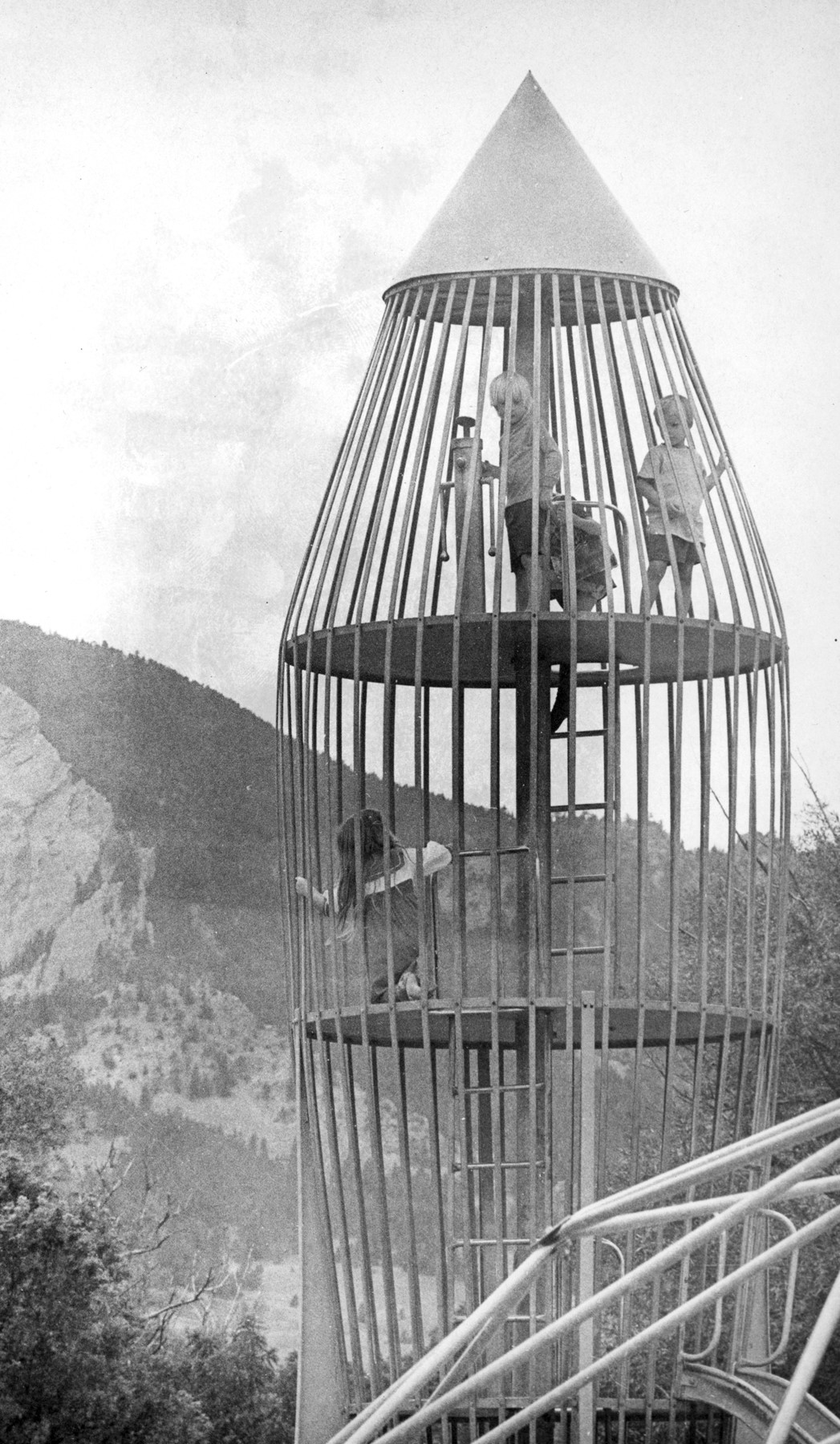 Every day, children at Scott Carpenter Park climb on a piece of playground equipment designed to look like a rocket ship. Originally, the tower-like structure was planned for the summit of a play area to be called Moon Mountain, designed to acknowledge astronaut Scott Carpenter. The Boulder native orbited the Earth three times in May 1962.
Every day, children at Scott Carpenter Park climb on a piece of playground equipment designed to look like a rocket ship. Originally, the tower-like structure was planned for the summit of a play area to be called Moon Mountain, designed to acknowledge astronaut Scott Carpenter. The Boulder native orbited the Earth three times in May 1962.
Few of the kids running around the playground today know the history and background of the rocket ship, but its significance has been documented in a photography exhibit titled “Once Upon a Playground,” displayed in 2008 at the Dairy Center for the Arts.
According to Boulder Daily Camera articles from 1966, the large proposed space-themed playground was designed by Sam L. Huddleston of Denver. As originally planned, it would have included a third of an acre of concrete-covered forms, complete with a climbing area and slides meant to simulate the surface of the moon. The “moonscape” was envisioned with caves, tunnels, craters, and spires and even a “control center with sitting space for mothers.”
After Carpenter’s historic flight, the city of Boulder gave its native son a welcome-home ceremony, temporarily displaying a model of his Aurora 7 Mercury Spacecraft on Pearl Street in front of the Boulder County Courthouse.
While Moon Mountain was in the planning stages, city officials tried, unsuccessfully, to gain permanent possession of the space capsule and place that, too, in the park.
In 1967, the Boulder City Council approved architect Huddleston’s plans, but funding for the complete Moon Mountain project quickly became controversial. Opponents argued that funds could be better spent on acquiring park land or initiating more park planting. Others feared that too much concrete would destroy the natural beauty of the area.
Parks and Recreation Director Dwain Miller, however, called the Moon Mountain proposal “a delight to children” and “unique and appropriate for a park named in honor of Scott Carpenter.” The astronaut was born in Boulder in 1925 and had graduated from both Boulder High School and the University of Colorado.
The city’s budget got scaled down, and the originally designed space-theme playground never materialized. Instead, only a few pieces of playground equipment were installed, including a “satellite climber” and a “radar tower and slide,” both donated to the city by the American Association of University Women.
Of the original proposal, the only surviving piece was the twenty-six-foot, four-level rocket ship. City councilman John Buechner and Parks and Recreation Advisory Board member Albert Bartlett, with their wives and children, were among those who gathered for the dedication on a chilly fall day in October 1970. The project’s total cost, including landscaping, came to $38,000, with half of the funds coming from the United States Department of Interior’s Bureau of Outdoor Recreation.
The photo of the Scott Carpenter Park rocket ship that was displayed was part of an exhibit on Colorado vintage playground equipment. Photographer Brenda Biondo used the opportunity to capture unique views of several well-loved childhood artifacts, many of which are fast disappearing from the American landscape.
Hopefully, the rocket ship honoring Boulder’s hometown hero will survive for more many more years.
Boulder Counterculture
"Boulder Called a Counterculture Haven in 1980"
Boulder Daily Camera, May 25, 2008
 A few years ago, a New York Times Sunday Magazine article on Boulder described the city as “25 square miles surrounded by reality” and a “heaven on earth” for latte-lovers and others. It was not the first time that the national media has splashed the city’s image in clichés.
A few years ago, a New York Times Sunday Magazine article on Boulder described the city as “25 square miles surrounded by reality” and a “heaven on earth” for latte-lovers and others. It was not the first time that the national media has splashed the city’s image in clichés.
In July 1980, Newsweek magazine published an article on Boulder titled, “Where the Hip Meet to Trip.” The magazine’s writers described the city as one giant fern bar, a haven for the counterculture, and a place where “dropouts drop in.”
Instead of the recent focus on a lean, keen, and green population, the 1980 article concentrated on a perception of rampant drug use by local residents. According to the national magazine writers, Boulder had become so “hedonistic and laid-back” that it was in danger of becoming “strung-out.”
City officials were outraged. Mayor Ruth Correll and City Manager Robert Westdyke carefully crafted a letter to Newsweek’s editor, but only part of the letter was published in a subsequent issue.
Instead, the image of Boulder that magazine subscribers across the country read was the one given by a twenty-six-year-old real-estate salesman who described what was, for him, a typical Friday afternoon. “Male goes to the Harvest House [now the Millennium Harvest House Hotel] for female in Danskin top, short shorts, and impenetrable sun glasses,” he told a reporter. “Goes home and shoves 2.5 grams of coke up her nose and pops as many Flight 714 Quaaludes as necessary for an evening of sexual bliss.”
Another resident, a computer salesman, said he could “smoke dope anywhere and live a mellow uptown life.” In reference to the jail––then located in the Boulder County Justice Center––the article claimed that the winos all but beg to be busted, “the better to enjoy the volley ball clinic and savor the gourmet chow.”
Newsstands in Boulder quickly sold out of Newsweek. The depiction of Boulder as a drug center was controversial, with some residents in agreement with at least the tone of the article, while others were adamantly opposed. The Boulder Daily Camera solicited written comments and sent the letters in one large packet to the Newsweek editor.
The magazine published three paragraphs of Correll and Westdyke’s comments on the story’s blatant errors. They adamantly stated that neither the Boulder City Council nor the Boulder Police Department was, as reported, “dominated by former radicals.” And although nude swimming and sunbathing was allowed at Coot Lake, the Boulder representatives were quick to point out that “public nudity per se” was not illegal, and the lake was not near a school.
Environmental policies and growth management were the only stated topics that met Correll and Westdyke’s approval. Their rebuttal was published without their first sentence which read:
The factual inaccuracies and misleading innuendoes in your report on Boulder, Colorado, are shocking and disappointing to find in a national news publication which millions of Americans accept on faith as being fair and comprehensive in its coverage.
One Boulder local, however, whose letter was published, wrote that he was “screaming with laughter,” and that the story “needed to be told .”
KKK
"KKK’s intimidation and bigotry didn’t sit well with Boulder residents"
Boulder Daily Camera, August 26, 2018
In 1922, when more than 200 hooded and robed members of the Ku Klux Klan, in 63 automobiles, slowly drove down Pearl Street, a Daily Camera reporter called them “a mysterious shrouded mass.” Even the license plates on their cars were blacked out.
That same year, the Klan held its first initiation in Boulder. But the secret society’s presence in the city was short-lived, as its intimidation and bigotry didn’t sit well with the local residents.
“The Ku Kluxers didn’t hurt anyone or destroy property, but they scared people,” stated the late Gertrude Dunning. In an interview in 2000, the then-91-year-old Boulder resident explained that, as a teenager, she and her boyfriend had witnessed one of the KKK’s outdoor evening assemblies from a distance and from the safety of their car.
Boulder’s Klan meetings were held in various locations along the foothills. Some were reported west of Dakota Ridge, while others were “north of Boulder,” probably in the vicinity of Linden Avenue or Lee Hill Road.
Although most Klan members kept their identities secret, some Boulder businesses went public in their endorsements. One dry cleaner advertised “Klothing Karefully Kleaned,” while a local grocery store’s slogan was “Kash and Karry.”
Outspoken Daily Camera editor L.C. Paddock goaded the Klan whenever he could and referred to them as the “Komic Kapers Klub.” In its own briefly published newspaper, the Klan struck back by calling the Camera “the Daily, yet weakly, Clamera.”
In 1924, after the Klan burned a 53-foot cross on Flagstaff Mountain, Paddock wrote, “Five carloads of men attended the rite (or wrong).” The blaze fizzled out after it starting raining, but it had been visible on the plains for miles.
Although the Klan’s original, post-Civil War, focus had been white supremacy, its basically Protestant members, in the 1920s, turned their opposition to Catholics and Jews. Boulder’s only Catholic church at the time was Sacred Heart. Some of its members found burning crosses on their front lawns.
Meanwhile, the city only had a few Jewish residents, and Boulder had no synagogues, at all, at the time.
The Klan’s intolerance of Catholic and Jewish religious groups was more pronounced at the state level. By 1924, the Klan had infiltrated the Colorado state legislature. That same year, Denver judge Clarence J. Morley was elected as Colorado’s governor, serving one term, from 1925 to 1927.
As a Klan member, Morley was said to have taken orders from the Klan’s “Grand Dragon,” John Locke.
One of Locke’s orders went to University of Colorado President George Norlin whom he told to rid CU’s faculty of Catholics and Jews (if any). Norlin stood up to the Klan and refused. During Governor Morley’s term, the University received little or no funds from the Klan-controlled state legislature.
Boulder’s “Klavern No. 3,” as the local group was called, voted to dissolve in 1925. The following year, the Klan lost its strong grip on Colorado politics when the federal government investigated the “Grand Dragon” for income tax evasion.
“It was exciting while it lasted,” added Dunning, who came from a Catholic family. “There wasn’t much else to talk about in Boulder at the time.”
Women Voters
"Appeals made to women voters–in 1894"
Boulder Daily Camera, October 28, 2012
 Today’s politicians place a lot of importance on courting different segments of the voting public, and that includes women. The same was true in 1894, when women in Boulder and in the rest of Colorado went to the polls for the first time.
Today’s politicians place a lot of importance on courting different segments of the voting public, and that includes women. The same was true in 1894, when women in Boulder and in the rest of Colorado went to the polls for the first time.
Although 1894 was not a presidential election year (that would come two years later when William McKinley was voted into office), newspaper editors in the days leading up to election day made a concerted effort to encourage, educate, and influence women voters.
At the time, Colorado (and Wyoming, even during its territorial days) was way ahead of the rest of the country. Women’s suffrage had been voted down in 1877, but it passed in 1893, a full 27 years before the 19th amendment to the U.S. Constitution granted women all over the country the right to vote.
In October 1894, the Boulder Daily Camera was full of advice, assuring women that their votes were their own. Editorials explained that each voting place would be set off by railings, preventing those outside the rails from approaching within six feet of the ballot box.
Women, however, were given mixed messages. One editorial claimed that the Populist Party, more than any other, favored enfranchising women. Although told to vote their convictions, women were expected to “feel kindly” toward the party responsible for their new-found rights.
The female “novices” also were told that inside individual booths, they would be provided with pens, ink, and blotting paper. They also were instructed that they “must use ink and be careful to blot it,” so that no other marks, other than their choices for offices, would mar the paper ballots.
Meanwhile, Kate Field, a Washington, D.C.-based writer, was the editor of a national political publication titled Kate Field’s Washington. Even though her residence made her unable to cast her own ballot, she exerted her influence by urging women of Colorado to think and to vote.
In 1894, the big Colorado race was for governor. The Daily Camera endorsed the Populist Party’s candidate, incumbent David Waite. Three thousand men, women, and children gathered on the lawn of the Boulder County Courthouse, where they patiently listened to his two-hour speech.
On election day, the Daily Camera reported that Boulder women were well-organized in getting their fellow citizens to the polls. Of the women, a writer noted, “They drove the carriages or ordered them, they knew where their voters were, they got them out, and in every respect developed political energy and talent of high order.”
Boulder County’s vote went mostly for Waite, the Populist Party candidate. Elsewhere in the state, others voted for the Democratic and Prohibitionist candidates, but Republican Albert McIntire won the state by a landslide.
According to a publication of the Non-Partisan Colorado Equal Suffrage Association, one of the early arguments against granting women the right to vote had been that it would rob them of their “essential womanliness .”
Field, in her article, countered that argument by insisting that Colorado women exercise their new right. “You cannot afford to make mistakes,” she wrote. “Your sex is on trial .”











